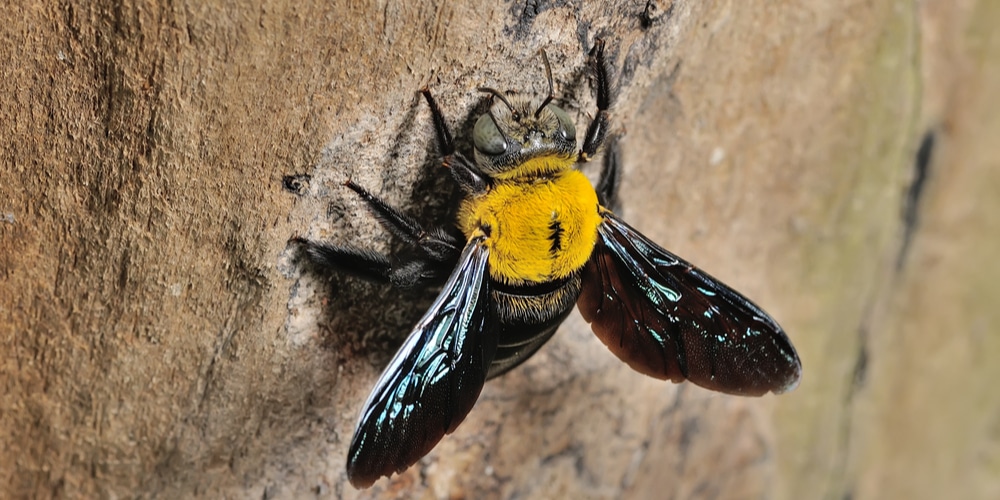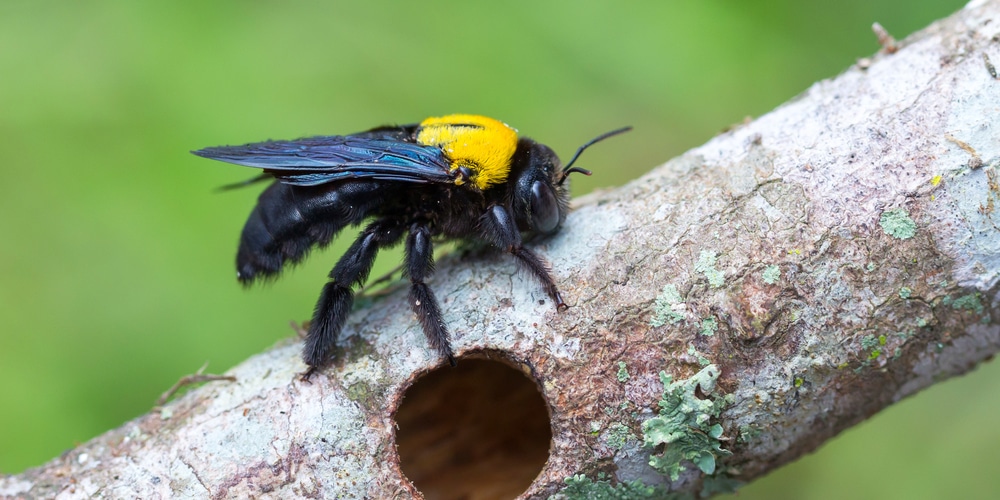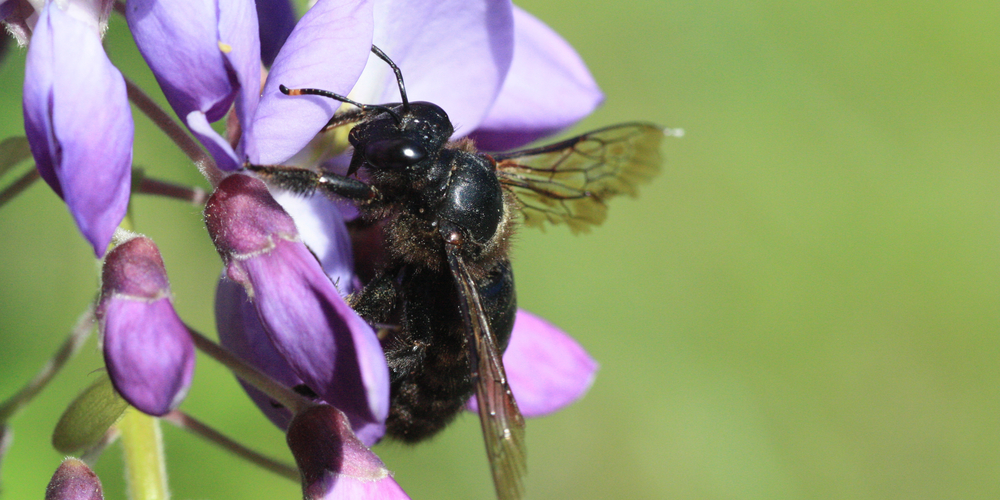Carpenter bees are a common sight in the spring when they emerge from their winter hibernation. These large, black bees can often be seen hovering around porch railings and eaves, searching for a spot to drill into wood and make their nest.
While carpenter bees are not aggressive, their nesting habits can cause damage to your home. If you see carpenter bees around your property, it’s essential to take steps to prevent them from drilling into the wood. Understanding their nesting habits is the first step in doing this.
What Kind of Wood Do Carpenter Bees Like?
Woods are made up of different types of fibers, and carpenter bees prefer woods with softer fibers. They’re attracted to these woods because they’re easier to drill into, which in turn, makes it easier for them to build their nests.
Some of the most common woods that carpenter bees are attracted to include:
Cedar
Most carpenter bees prefer softer woods to build their nests, such as cedar. The wood is easy to chew through and provides plenty of space for the bee to create its tunnel.
Cedar also has a pleasant smell that attracts the bee, making it more likely to return to the same area in future years. In addition, cedar is a durable wood that can withstand the elements, providing long-lasting protection for the bee’s offspring.
As a result, it is no surprise that many carpenter bees prefer cedar wood when building their nests.
Pine
Carpenter bees are attracted to several different types of wood, but they seem to prefer pine. Pine is a type of softwood that makes it easier for the bees to drill into. The wood is also full of resin, which the bees use to build their nests.
In addition, pine trees are often covered in pollen, which provides a food source for the bees. Consequently, carpenter bees are more likely to build their nests near pine trees than other types of trees.
Fir
Fir is another softwood that carpenter bees are attracted to. The wood is easy to chew through, and the bee can create a large nest inside the tree. Moreover, fir trees are often covered in pollen, which provides a food source for the bees.
As a result, carpenter bees are more likely to build their nests near fir trees than other types of trees.
Cypress
Cypress is another softwood that carpenter bees are attracted to. The wood is easy to chew through, and the bee can create a large nest inside the tree. Cypress trees are also known for their resistance to rot, making them a good choice for the bee’s nest.
What are Carpenter Bees Drawn To?
Although carpenter bees have their preferences for wood, they are also drawn to other things. For example, the bees are attracted to areas with a lot of sun exposure. This is because the sun helps keep the nest warm.
In addition, carpenter bees are drawn to areas with plenty of food sources. This includes flowers and trees that are covered in pollen. The bees use the pollen as a food source, and it also helps them build their nests.
What Can You Do To Prevent Carpenter Bees?
Carpenter bees are solitary insects that are known for their wood-boring habits. These bees tunnel into wood to create nesting sites, and their excavations can cause serious damage to structures. While carpenter bees are not aggressive, their nesting activities can be a nuisance.
Fortunately, there are a few things you can do to prevent these bees from taking up residence in your home.
Caulk Any Cracks or Holes
Carpenter bees get their name from their nesting behavior: they bore tunnel-like passageways into the wood to lay their eggs. These bees are not social insects like honeybees, so they don’t live in hives or produce honey. However, they are still beneficial pollinators.
Carpenter bees are attracted to weathered or unpainted wood, so one way to deter them is to caulk any cracks or holes in the exterior of your home. You can also paint or stain any exposed wood to make it less appealing to carpenter bees. If you have a deck or other wooden structure on your property, keep it in good repair and regularly treated with insecticide.
Paint or Stain Wooden Structures
As mentioned above, carpenter bees are attracted to weathered or unpainted wood. One way to deter them is to paint or stain any exposed wood on your property. This will make the wood less appealing to the bees and help protect it from damage.
Remove Nests
If carpenter bees have already taken up residence in your home, you’ll need to remove their nests. This can be a difficult task, as the bees will drill tunnel-like passageways into the wood. To remove a nest, you’ll need to locate the entrance hole and plug it with steel wool or another material. Then, you can use a vacuum to remove the nest.
You can also hire a pest control professional to remove the nests and treat your home to prevent future infestations.
Trim Trees and Shrubs
One effective preventative measure is to trim trees and shrubs around the perimeter of the house. Carpenter bees are attracted to wood that is bare, cracked, or otherwise damaged. By trimming back foliage, you can make it more difficult for the bees to find a suitable nesting site.
What kind of wood do carpenter bees like: Final Thoughts
Carpenter bees get their name from their habit of excavating tunnels in wood to lay their eggs. While they will chew through any type of wood, they seem to prefer softer woods like cedar and redwood. The bees bore into the wood, creating a series of interlocking chambers that they use to raise their young.
They are not aggressive and will only sting humans if they feel threatened. However, their nesting behavior can cause damage to structures. If you’re concerned about carpenter bees, there are a few things you can do to prevent them from taking up residence in your home.
These include caulking cracks and holes, painting or staining exposed wood, and trimming back trees and shrubs. If you already have a carpenter bee infestation, you can remove the nests yourself or hire a pest control professional to do it for you.
Related Article: Do Carpenter Bees Make Homey?


